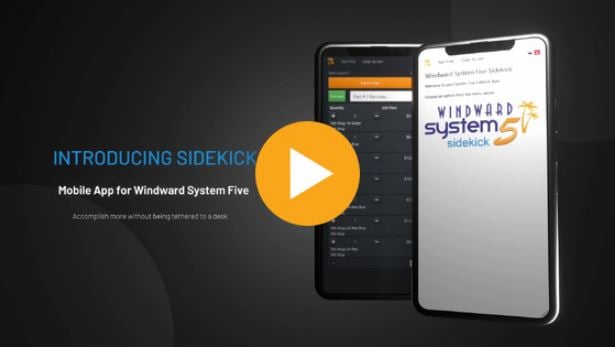WARNING: Please perform inventory integrity with "fix" options before performing a physical count.
You are familiar with Physical Counts, so what's important with AIC physical inventory counts?
If you are familiar with the inventory physical count process and want to know how AIC counts are different, you should read this section.
- AIC physical counts give you the ability to count the items at a specific location instead of grouping everything together and having to count all the locations the item is at.
- The count batch will show a line for each location for a part instead of just 1 line for a part.
- This allows you to manage the counts at each location an item is at.
- In AIC there is no consolidated count method that allows you to combine the locations and just do a bigger count. It doesn't make sense to combine all the locations in one count either.
- TIP: If you are forced to do a consolidated count in AIC there is a process you can use.
- 1) Remove all of your stock
- 2) Perform a count putting everything into the “<No Location Assigned>” location
- CAUTION: If you do a consolidated count you will reset the cost of all of your products. This is not allowed from an accounting perspective, so you have to take special steps. Imagine that you have $1,000,000 of inventory you counted your stock and no quantities changed but your inventory went down to $500,000 or up to $1,500,000.
- Consolidated inventory only works for regular inventory, so you must test the process as it doesn't apply to serials/units, select lots, certain kit types, and probably a fair number of other scenarios.
- Information: If you load the average cost to your inventory before performing step 2) of the count, the average cost should stay relatively correct.
- CAUTION: Work orders, RMA's, and other business activities reserve stock that would create challenges to being able to use the consolidated count method.
- The count batch also has locations on it, so if you are using count batches there are some interesting options available to you.
- If you import a count file then by default the counts will all come in blank representing “<No Location Assigned>”
- If you set the location context before importing a count file, then that location will be assigned to the parts from that count batch.
Big Count Method and AIC
The physical big count (https://support.windwardsoftware.com/a/solutions/articles/66000487007) article describes the counting process used to take advantage of scanning functionality in a way that helps you get correct counts by using good processes. Physical counting in AIC allows you to break up the big count into smaller, more manageable pieces if you wish. It does this mainly by allowing you to just count what is at a location, or group of locations.
- IMPORTANT: Even in AIC, you still need to count everything to have a complete count.
- I suggest that you still use the big count process when counting for year-end making a slight modification to allow for AIC locations. Then for the rest of the year, you do cycle counts. You must set a location on each item when doing scan batches, but you can set a default location for the count file you are importing.
- Key Consideration: When doing a scan batch in AIC, please make 1 scan batch for each individual shelf or location in the store. This suggestion is to prevent you from having to manually set the locations on each line of the scan batch.
- If you set the location context field at the top of the scan batch to the location of the count file you are about to import into your scan batch then all the items imported will be marked as being at that location.
- CAUTION: You will Add new stock to inventory if you forget to assign locations to your scan batch.
- WHY: If you import a count file then by default the counts will all come in blank representing “<No Location Assigned>”. So basically when it is added to the count batch you end up adding all those parts to “<No Location Assigned>” location instead of location xxxxxxxx.
- If your inventory doubles up in AIC, this is probably why. There is no message that comes up during the process. If you didn't catch this during the review of the count, then there are some more checks that need to be added to that process. Most notably, how much would my inventory value change if I processed this count?
IMPORTANT: Scan batches default to <noLocation> / blank
Basically, when you import a scan batch it brings in a blank location field which is viewed as “<noLocation>” when imported to the scan batch. So if you scan all your items in your store which have valid locations, import to scan batch, attach to a physical count, and process: you will double the inventory in your store. You must make sure every line on the scan batch has the correct location before applying to any count batch.




